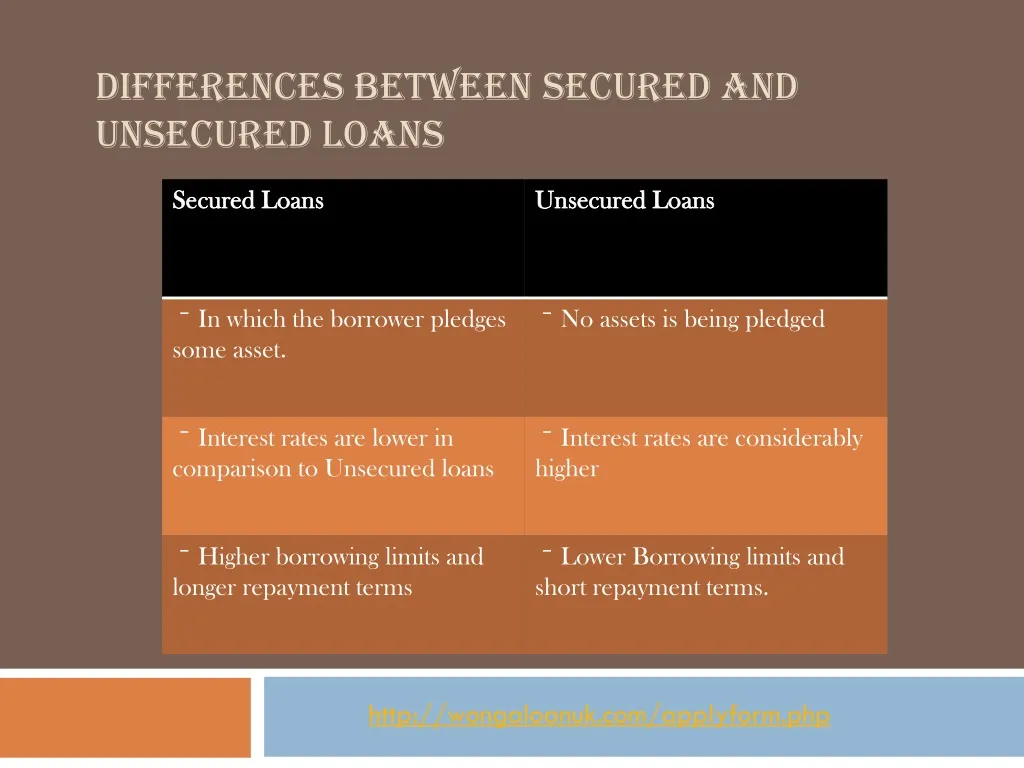simf-room.ru

With an unsecured loan, you're not required to put down any type of collateral. As a result, however, you may need to have a higher credit score in order to get. Secured vs. unsecured debt: Understanding the difference and its impact on interest rates · Secured debt (or secured credit) is backed by collateral—an asset—. Secured loans are protected by an asset (collateral). · Unsecured loans require no collateral. · Secured loans allow you to borrow large amounts of money — for.
Unsecured loans do not require collateral, making them easier to get with less paperwork. That said, they generally have a higher interest rate due to increased. Secured loans have lower interest rates, but you must pledge your assets as collateral to obtain the loan. Unsecured loans, on the other hand, can be a good. While the interest rate on an unsecured personal loan is usually higher than a secured loan, it also offers a little more flexibility and a quicker and.
Yet again we see the difference between secured vs unsecured loans: the banks have the ability to physically seize the collateral in the event of non-payment. For a secured loan, your credit union will hold some of your funds as collateral until your loan is paid in full. For an unsecured loan, you don't need to put. And many of us are not sure what the difference is. Broadly, secured loans are tied to an asset, like your home or automobile. Unsecured loans are not tied to.
A secured loan requires you to offer security or collateral to borrow money; an unsecured loan doesn't. Understanding the difference between a secured vs.The primary difference between secured and unsecured personal loans is the presence of collateral. A secured loan requires that you use one of your assets as.Unsecured loans allow for faster approvals since collateral is not required. When to consider unsecured loans and lines of credit. The main advantage of an.
The main difference between a secured loan and an unsecured loan is whether the lender requires security. Secured loans are backed by collateral and tend to have lower interest rates, higher borrowing limits and fewer restrictions than unsecured loans. Because unsecured loans put lenders at higher risk, they may have a higher interest rate than secured loans. Secured loans require that you offer up something you own of value as collateral in case you can't pay back your loan, whereas unsecured loans allow you borrow.
A secured loan is money borrowed or 'secured' against an asset you own, such as your home, whereas an unsecured loan isn't tied to an asset. Unsecured loans are not tied to any specific asset. Understanding these types of loans in more detail can help you borrow money wisely. What is a Secured Loan? The main difference between secured and unsecured loans is collateral. While secured loans involve collateral, unsecured loans don't require you to put up. Secured loans require collateral, which can mean more favorable terms and interest rates. Unsecured loans don't require collateral, but that could make. Secured vs. Unsecured Loans · "Secured" Loans Means Collateral. When you take out a secured loan, you're asked to put up collateral. · Both Types Can Help Build.
A secured loan or line of credit is backed up, or "secured", by money or an item that can be repossessed in the event that you stop paying the loan. What is an unsecured loan? Unsecured loans do not require collateral. This means borrowers are not required to have any assets—like property or vehicles—to. A secured loan is normally easier to get, as there's less risk to the lender. If you have a poor credit history or you're rebuilding credit, for example. A secured loan requires the borrower to pledge some sort of asset — such as a car, property or cash — as collateral; an unsecured loan does not require.